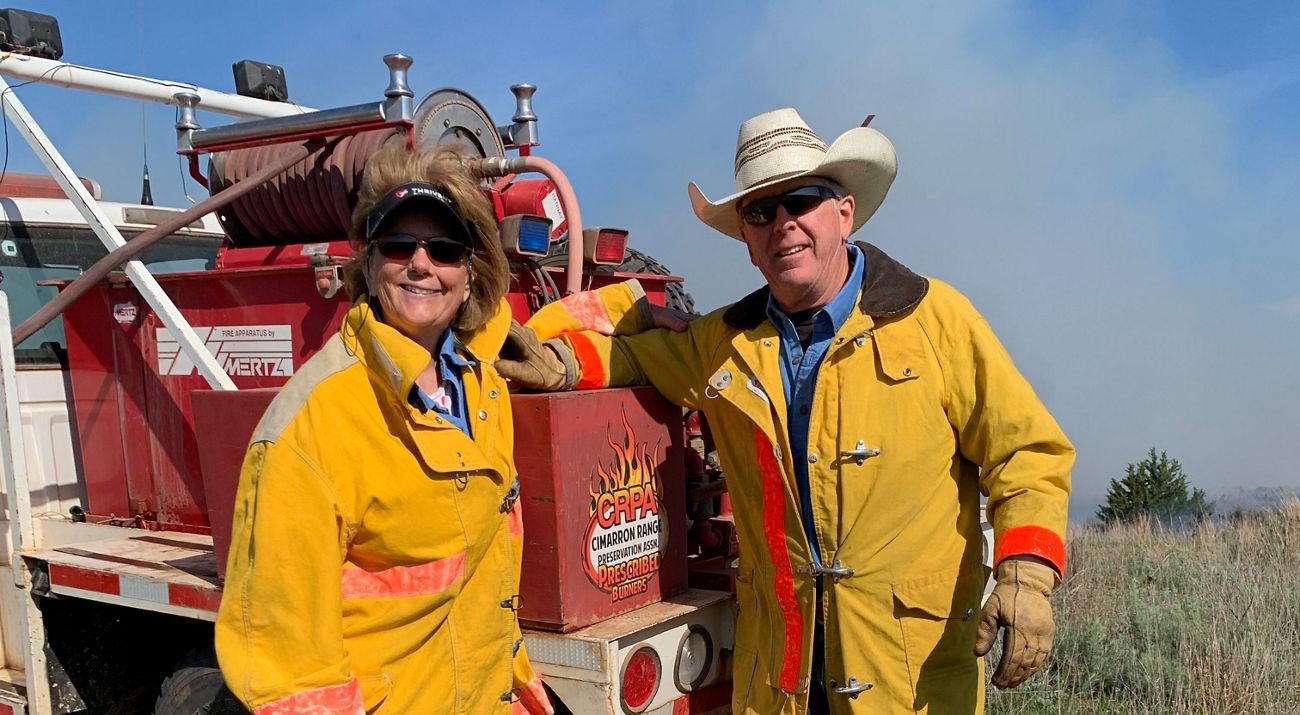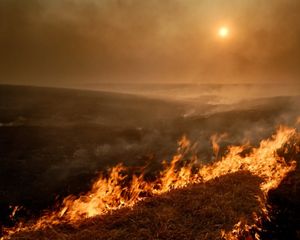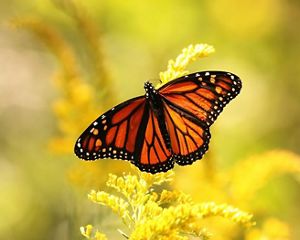Welcome to the Lazy KT Ranch in northwestern Oklahoma—a place rich in buzzing pollinators and happy grazers. It’s also the home of Jackass Ridge, an area on the ranch that is known for several memorable events including how it earned its name. Once upon a time, a brave herd of burros bailed off the edge of the jagged red canyon cliff, which had never needed a fence in all the years of running cattle on the ranch. Did you know that burros navigate terrain much like mountain goats? The Ridge is also where Katie Blunk and her husband, Michael Horntvedt, said their wedding vows on horseback in front of the large, heart-shaped red canyon wall.
But that’s not all that the Lazy KT Ranch is known for. Located in Freedom, Oklahoma, this family ranch has been the home to three generations of cow-calf operations and is a wildlife diversity hotspot…literally. Via the use of clearing invasive Eastern red cedar trees followed by prescribed burns, Katie and her family have reclaimed the land’s native species, beauty and resilience.
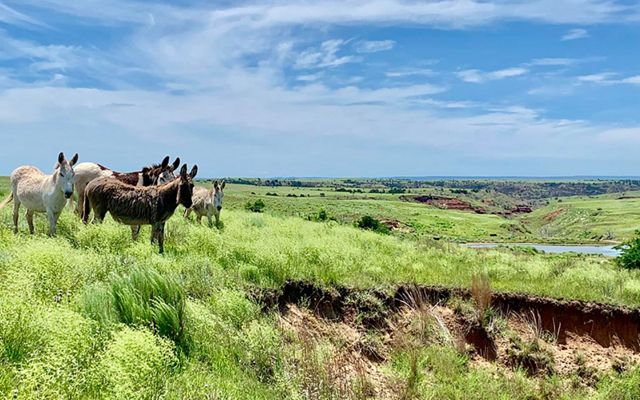
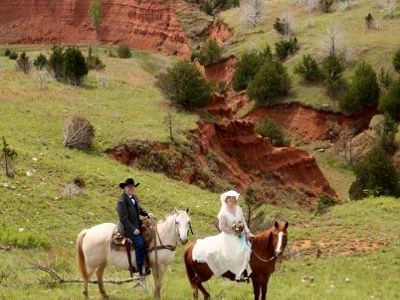
Home on the Ranch
Katie grew up on the Blunk family’s farm and ranch northwest of Hardtner, Kansas, but spent many of her childhood days visiting her grandfather on the Oklahoma ranch.
“He had a great influence on who I became growing up, being a horse freak, horse lover, veterinarian…it all fell into place. I’ve always had fond, fond memories of this place,” says Katie.
In 1995, Katie’s mom, Rose Blunk, inherited the Oklahoma ranch but was overwhelmed with the infestation of Eastern red cedars. While native to Oklahoma, they do not belong in many of the areas where they now grow. Eastern red cedar is spreading for a number of reasons, including the lack of fire on the landscape. Prior to settlement, lightning-caused fires or fires set intentionally by Native Americans swept frequently across forest and plain. These periodic fires restricted the spread of eastern red cedar, confining them to canyons, limestone outcrops or other places where fire intensity was low. In 2000, it was estimated that red cedars cost Oklahoma $218 million dollars annually through catastrophic wildfires, as well as loss of cattle forage, recreation, water yield and wildlife habitat.
Quote: Katie Blunk
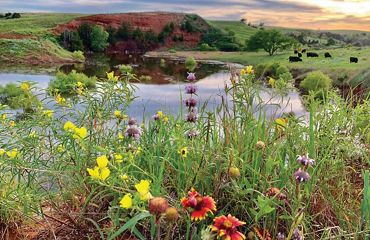
Fire is the best and most economical tool that anyone could implement to be good stewards of the land. These flowers are a result of the summer burn we did last year, add a dose of rain and grazing, and then voilà!
However, with financial and technical assistance from programs available through the United States Department of Agriculture (USDA) Natural Resources Conservation Service (NRCS), Rose was able to cut cedars and get prescribed burns on the ground, eventually seeing her way out of the cedar forest.
“Mom burned it in 2005 and 2007, and then Michael and I spent several more years continuing to prep the land, clearing cedars, building proper firebreaks, and finally began burning again in 2016. It’s an ongoing process that we can never relax on,” says Katie. “That’s why we are going to continue with the burning cycle, burning about a third of the ranch every year, to stay ahead of the cedars and benefit the rangeland.”
Starting a New Legacy
In 2012, Katie and Michael moved back to this Oklahoma ranch from Nevada and carried onward with what her trail blazing mother, Rose, had been doing for the past 15 years to restore the range. Since then, it has become more than childhood memories and is now an everyday reality. Managing the ranch has also become a story of collaboration.
Not only is Katie practicing prescribed burns on the family’s ranch, but she is also active in helping others do the same. She volunteers her time, currently serving as President, for the Cimarron Range Preservation Association (CRPA), the local prescribed burn association with about 60 members who are local landowners around Freedom, Oklahoma. CRPA landowners are able to pool both equipment and skilled labor to allow members of the association to safely and effectively conduct prescribed burns on their property. Katie also serves as Chairman of the Woods County Conservation District which provides technical and funding assistance to local landowners, including firebreak assistance and prescribed burning.
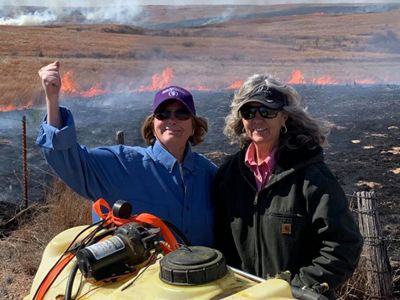
“It’s a classic example of neighbors helping neighbors,” says Katie. “We have some members that are very seasoned and experienced, and we have new members that are excited to bring fires to their lands as well. We need the young members because when we are gone from here, it will just be a matter of four years before there will be six-foot cedars growing out here again. It’s a never-ending battle.”
Resources to Help
In 2016, the ranch was enrolled in the Monarch Environmental Quality Incentives Program (EQIP), a voluntary conservation program available for agricultural producers provided by the United States Department of Agriculture’s Natural Resources Conservation Services (NRCS). EQIP helped to develop a prescribed burn plan, build firebreaks and apply prescribed fires to their lands, as well as develop a grazing plan in conjunction with proper cattle stocking rates and rotational grazing to let the land rest and regrow.
“We practice grazing management through the use of patch prescribed burning where we burn a third of the ranch every year to rotate the livestock,” says Katie. “We don’t have a lot of cross fencing on this ranch. Our burn practices are the main way we move the cattle around.”
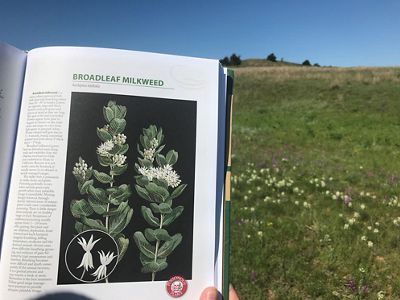

In addition to revitalizing native grasses that cattle are attracted to, prescribed burns are also productive for other native plants such as milkweed—the monarch butterfly’s host plant. So far, Katie and Michael have found two native milkweed species on their ranch: broadleaf and antelopehorn. Even though they are listed as a poisonous plant, it would require a large amount of consumption to be toxic to livestock. The cattle don’t like the taste and will only resort to eating milkweed if no other forage is available.
“If you have proper grazing management and stocking rate, the cattle are generally going to eat the good forage and avoid the toxic weeds,” says Katie. “It boils down to good grazing management...don’t overgraze the land and leave plenty of forage for your cattle.”
NRCS Financial & Technical Assistance Programs
For more information, please visit your local USDA field office.
Find Your Local Field OfficeRanchers Saving Monarchs
Each year, over the course of a few generations, monarchs make an incredible journey across North America to overwintering sites in Mexico. However, in the last decade due to habitat loss and other factors, monarch butterfly populations have plummeted at an alarming rate. Because Oklahoma is centrally located in the heart of the butterfly’s migratory path, NRCS is working with agricultural producers to combat the decline of monarch butterflies by providing technical and financial assistance for conservation practices through EQIP.
“We are really pleased with the benefits, not only for improving the habitat for the pollinators, wildlife, and the livestock, but also to mitigate the reduction of wildfire damage and the Eastern red cedars that are encroaching, says Katie. "It’s a win, win all the way around. For the cows and the butterflies, and the birds and the bees.”
Stand Up for Nature in Oklahoma
Since 1986, we have worked to conserve Oklahoma’s magnificent landscapes and unique biodiversity totaling more than 100,000 acres. When you donate today, you will help ensure a thriving natural environment for future generations of Oklahoma.
